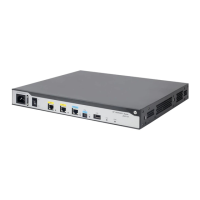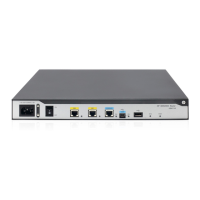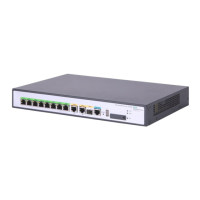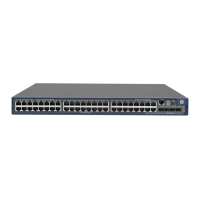22
1. Enter system view.
system-view
N/A
2. Enter IGMP-snooping view.
igmp-snooping
N/A
3. Enable fast-leave
processing globally.
fast-leave
[
vlan
vlan-list
]
By default, fast-leave processing
is disabled globally.
To enable fast-leave processing on a port:
1. Enter system view.
system-view
N/A
2. Enter Layer 2 Ethernet
interface view or
aggregate interface view.
interface
interface-type
interface-number
N/A
3. Enable fast-leave
processing on the port.
igmp-snooping
fast-leave
[
vlan
vlan-list
]
By default, fast-leave processing
is disabled on a port.
Disabling a port from becoming a dynamic router port
A receiver host might send IGMP general queries or PIM hello messages for testing purposes. On
the Layer 2 device, the port that receives either of the messages becomes a dynamic router port.
Before the aging timer for the port expires, the following problems might occur:
All multicast data for the VLAN to which the port belongs flows to the port. Then, the port
forwards the data to attached receiver hosts. The receiver hosts will receive multicast data that
it does not want to receive.
The port forwards the IGMP general queries or PIM hello messages to its upstream multicast
routers. These messages might affect the multicast routing protocol state (such as the IGMP
querier or DR election) on the multicast routers. This might further cause network interruption.
To solve these problems, you can disable a port from becoming a dynamic router port. This also
improves network security and the control over receiver hosts.
To disable a port from becoming a dynamic router port:
1. Enter system view.
system-view
N/A
2. Enter Layer 2 Ethernet
interface view or
aggregate interface view.
interface
interface-type
interface-number
N/A
3.
becoming a
port.
igmp-snooping
router-port-deny
[
vlan
vlan-list
]
By default, a port is allowed to
become a dynamic router port.
This configuration does not affect
configuration.
Configuring the IGMP snooping querier
This section describes how to configure an IGMP snooping querier.

